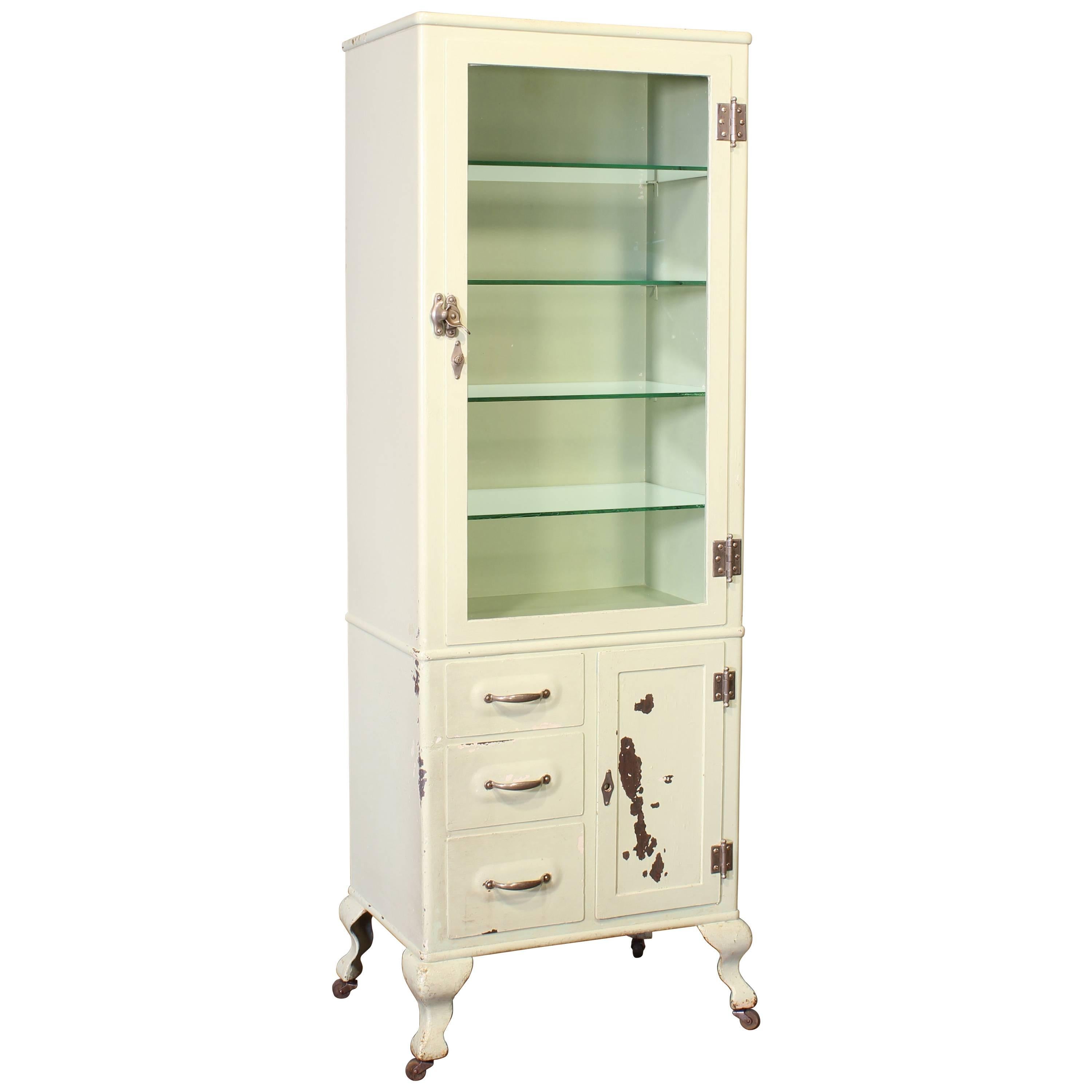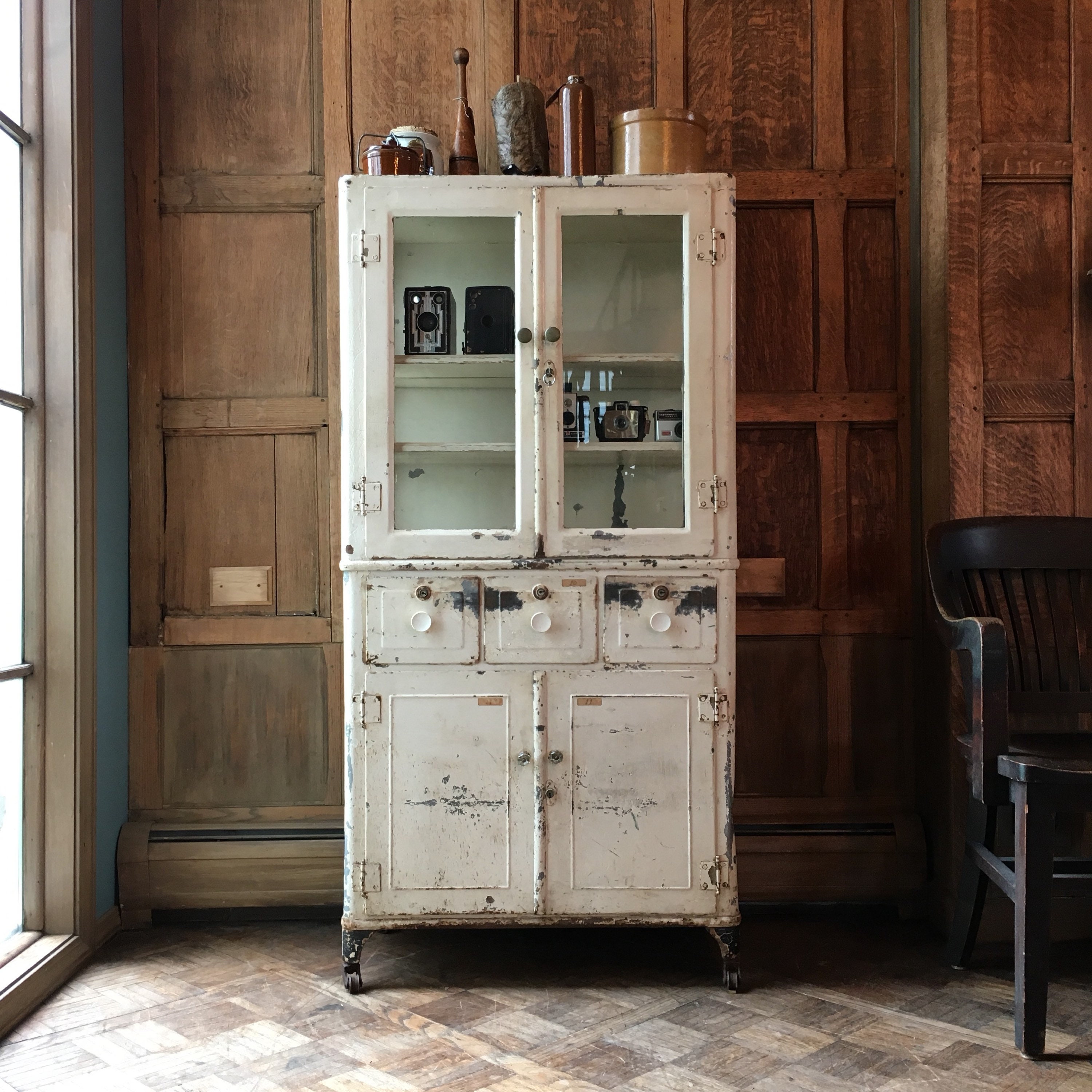Functionality and Practical Considerations

Integrating a vintage medicine cabinet into a modern bathroom presents a delightful blend of old-world charm and contemporary practicality. However, its successful implementation requires careful consideration of its inherent limitations and the unique challenges posed by its age. The following sections explore these aspects, offering practical guidance for installation, maintenance, and troubleshooting.
Storage Solutions and Potential Challenges
Vintage medicine cabinets, often smaller than their modern counterparts, necessitate a thoughtful approach to storage. Their shallow depth may limit the size of items that can be accommodated. Fragile or easily damaged items should be placed carefully to avoid breakage. The use of small, stackable containers and organizers can maximize space utilization. Challenges might include inadequate lighting, requiring supplemental illumination, and the potential for outdated hinges or latches to malfunction, needing repair or replacement. Furthermore, the cabinet’s age might necessitate careful handling to prevent damage to its delicate finish.
Vintage Medicine Cabinet Installation
Installing a vintage medicine cabinet demands patience and precision. Begin by carefully examining the cabinet’s back for existing mounting holes. Locate the studs in the wall using a stud finder. Mark the desired location for the cabinet on the wall, ensuring it aligns with the plumbing and electrical fixtures, if any are nearby. Pre-drill pilot holes to prevent splitting the wood. Secure the cabinet to the wall using appropriate screws, ensuring it’s level. If electrical wiring is involved, ensure the cabinet is grounded correctly and that the wiring conforms to current electrical codes. Plumbing connections, if any, should be carefully inspected and sealed to prevent leaks.
Maintenance and Restoration Techniques
Preserving the aesthetic appeal and functionality of a vintage medicine cabinet involves regular maintenance and, occasionally, restoration. Cleaning methods vary depending on the cabinet’s materials. For wood cabinets, a gentle dusting followed by wiping with a damp cloth is recommended. Avoid harsh chemicals or abrasive cleaners. For mirrored surfaces, a specialized glass cleaner will restore shine. For metal cabinets, a soft cloth and mild soap solution should suffice. More significant restoration might involve repairing damaged wood, replacing broken hinges or latches, and refinishing the cabinet’s surface. Minor scratches can often be touched up with appropriate wood filler or paint.
Common Problems and Solutions
Several common problems can affect vintage medicine cabinets. Sticking or malfunctioning hinges can often be remedied by lubricating them with a light oil. Loose or broken latches may require replacement. Cracked or damaged glass mirrors might necessitate professional replacement. Water damage, often evidenced by swelling wood or peeling paint, requires prompt attention. This may involve drying the affected area, treating with wood preservative, and repainting. Loose or missing screws should be tightened or replaced to ensure the cabinet’s stability. For significant structural damage, professional restoration might be necessary.
Finding and Sourcing Vintage Medicine Cabinets: Vintage Style Medicine Cabinet

The hunt for a vintage medicine cabinet is a treasure hunt, a journey into the past that can yield a beautiful and functional addition to your home. Finding the perfect piece requires patience, a keen eye, and a bit of detective work. The rewards, however, are a unique piece of history, imbued with character and charm.
Locations for Finding Vintage Medicine Cabinets, Vintage style medicine cabinet
Several avenues exist for discovering these charming relics. Each offers unique advantages and disadvantages that influence your search strategy. Consider the time commitment, budget, and desired level of restoration when selecting your hunting ground.
- Antique Shops: These specialized stores often curate collections of carefully restored and authenticated vintage items. The advantage lies in the expert assistance and guaranteed authenticity (often). However, prices tend to be higher, reflecting the work involved and the inherent value. Expect to pay a premium for convenience and peace of mind.
- Online Marketplaces (eBay, Etsy, etc.): The vast reach of online marketplaces offers unparalleled selection and potential for finding unique pieces. The downside is the increased risk of scams or misrepresented items. Thorough research, careful seller vetting, and high-resolution images are essential. Price ranges vary dramatically, depending on condition, rarity, and seller location.
- Flea Markets and Antique Shows: These events provide a hands-on experience, allowing for close inspection and negotiation. You might unearth hidden gems at bargain prices. The challenge lies in the unpredictable inventory and the need for immediate decision-making. Be prepared for some serious hunting!
- Estate Sales and Auctions: Estate sales often yield unexpected treasures, including forgotten medicine cabinets tucked away in old bathrooms. Auctions can be exciting but require a strategic bidding approach and understanding of market value. Both options require some luck and timing.
Price Variations and Influencing Factors
Prices for vintage medicine cabinets vary widely based on several crucial factors. A simple mirrored cabinet from the mid-20th century might cost a few hundred dollars, while a rare Art Deco piece in excellent condition could command thousands.
- Age and Rarity: Older and rarer cabinets, especially those with unique designs or maker’s marks, command higher prices. A pre-1920s cabinet in original condition, for example, will be far more expensive than a 1950s example.
- Condition: The cabinet’s state of preservation significantly affects its value. A fully restored cabinet will fetch a higher price than one requiring significant repair work. Original glass and hardware also increase value.
- Maker and Style: Recognized makers or distinctive design styles (like Art Deco or Mid-Century Modern) can increase a cabinet’s value considerably. A cabinet bearing a well-known manufacturer’s mark will be more desirable and expensive.
- Geographic Location: Prices can vary regionally due to supply and demand. A highly sought-after style in one area might be less common in another, affecting pricing accordingly. For example, a particular style popular in the American Southwest might command higher prices in that region.
Authenticating a Vintage Medicine Cabinet
Authenticating a vintage medicine cabinet involves careful examination for clues that confirm its age and origin. This process is essential to ensure you are acquiring a genuine antique and not a reproduction.
- Maker’s Marks: Examine the cabinet carefully for any markings, stamps, or labels that identify the manufacturer or period of production. These marks are often found on the inside of the door or on the cabinet’s frame. Researching these marks online or in antique reference books can help determine authenticity.
- Signs of Age: Look for characteristics consistent with age, such as minor imperfections, wear patterns, and variations in paint or finish. These signs, while seemingly flaws, often indicate the cabinet’s age and history. The presence of age-related wear and tear, if consistent with the cabinet’s purported age, can support its authenticity. Conversely, an overly pristine condition might suggest a recent reproduction.
- Construction Techniques: The construction methods employed in vintage cabinets often differ from modern techniques. Analyzing the joinery, the type of wood, and the overall craftsmanship can provide clues about its age. Older cabinets may use different joinery techniques, such as dovetail joints, compared to newer cabinets which might use simpler methods.
- Hardware: Examine the cabinet’s hinges, latches, and handles. The style and quality of the hardware can indicate its age and origin. Original hardware is usually more valuable than replacements.
